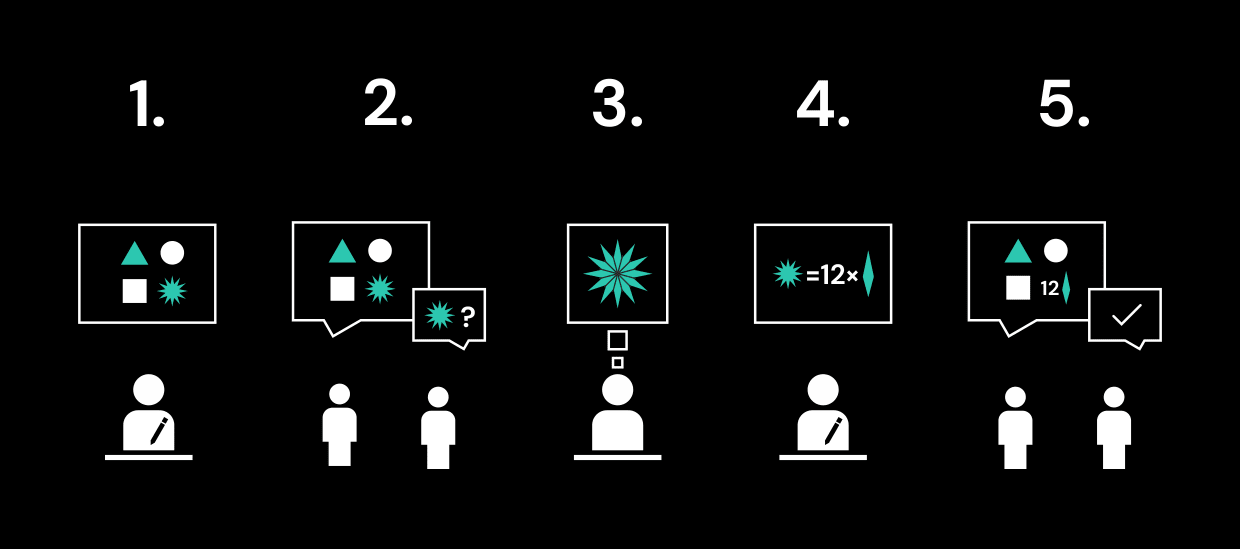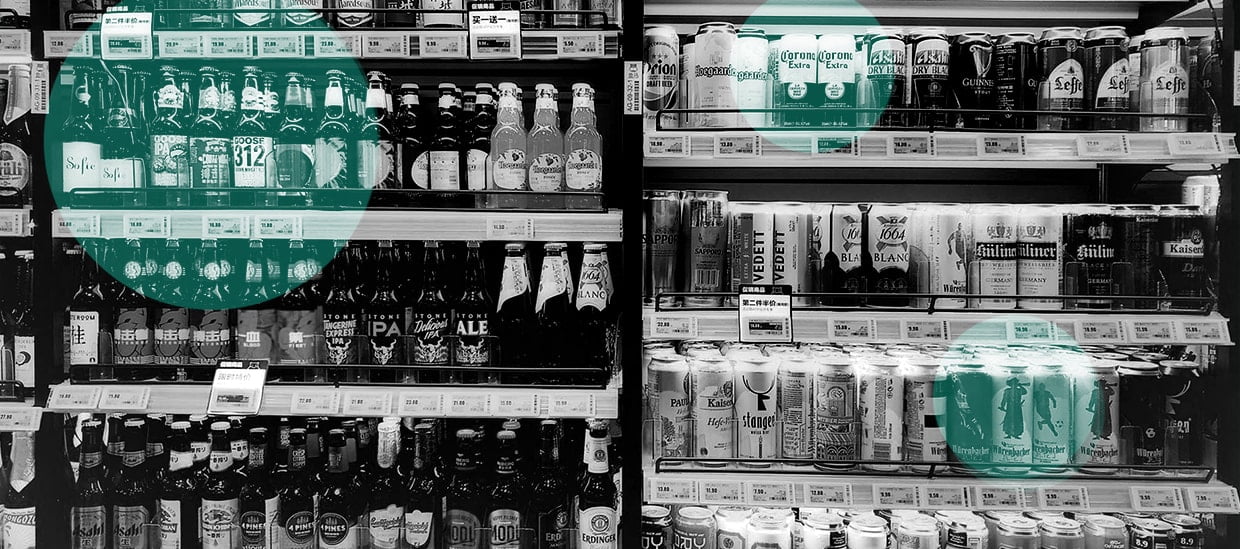
I have an idea for an app. But what do I do?
This post tells you in simple, understandable language, in just two broad steps. If we use jargon, we either explain it or link you to an explanation.
Before we get into more detail below, here’s an outline of the steps to go through to turn your app idea into something more:
Let’s dive into the first step and take it from there. By the time you’ve finished this article, you’ll know how to evaluate the potential of your app idea. Once you get there, you’ll be able to consider whether you want to shelve the whole project or push forward into development.
You may think you know what your idea is and you may be right. But by writing it down so that someone else could understand it, you’ll identify any gaps or weaknesses.
Why does writing down your app idea in as much detail as possible work? There are plenty of reasons, including:
Sounds powerful. Want to get started?
One approach you can take is the Feynman Technique, which is based on the well-supported belief that the best way to gain or demonstrate mastery of any body of knowledge is to teach it.
In fact, we recommend using this exact technique to get a clear understanding of your idea.
An astonishingly successful physicist, Richard Feynman was something of a high achiever, holding the Albert Einstein Award (1954, Princeton) the Einstein Award (Albert Einstein Award College of Medicine), and the Lawrence Award (1962).
Since it worked for him, you might want to give it a try. And remember; keep your notes organized and accessible.

Richard Feynman - originator of the Feynman Technique.
One extremely useful way of describing your app idea properly is by using the Feynman Technique.
The name sounds fancy but the beauty of this technique is its simplicity (and the simplicity it brings to handling complex information). To bring the power of this inspired tool to your app development process, follow these steps:
If you do find weaknesses or gaps, don’t panic. It doesn’t mean your app idea isn’t any good. It may just mean that it needs some improvement. You’ve made progress by identifying where it’s needed.

The Feynman Technique is a useful process for mastering a body of knowledge that is surprisingly useful in the early stages of app development.
As you can probably see from the Feynman technique, realizing you don’t know something is the first step towards mastery.
An extra benefit is that you now have a kick-ass document you can bring to others and use to collect their input. You can create copies and different versions that highlight different areas of your app idea for different groups.
For example, you could develop a pitch for investors based on the parts of your notes about the core concept and monetization strategy. Since you already have so many of the fundamentals written down, this needn’t take long; you can copy and paste when relevant!
Alternatively, you could copy the parts of your notes about UI/UX into an email and shoot them over to your designer friend and get their thoughts, if they’re willing. The possibilities are endless.
These notes will likely form the foundation of your business plan. So don’t skip this step.
Your app idea may be interesting and you might have plenty of ideas about the market it’s designed to serve in your notes from step 1 (see above).
But are your assumptions correct? Is there a market for your app? Is it the market you originally thought? And will anyone download your application? You need to make sure.
Market fit is important because it means that after you’ve spent potentially millions of dollars developing your app, you won’t be met with crickets. No market fit = no money. Assuming you want to make money, that alone should be motivation to care.
But how to check market fit?
If you want an exhaustive guide to market fit, you can check out our ultimate market fit guide.
Here’s the TL;DR version:
To define your market answer these questions:
To make this even clearer for you, let’s use an imaginary example. Pretend you have an idea for an amazing application for people to share rare and expensive cheeses. Let’s answer the questions above for this hypothetical example we call Fromage2U:
A dairy-tolerant person who has a taste for luxury cheese but not the budget to support a large collection. They are only able to buy one type of fancy cheese at a time, and somewhat infrequently. Perhaps one 500g piece per month.
Despite their modest budget, they have a taste for the finer things in life. They may also have a passion for wine and a subscription to The New Yorker.
They may even live in a major city, like New York, where the rent is astronomical - which would explain why their cheese budget is sadly restricted.
The core pain point for Fromage2U users is the desire for aspirationally priced cheeses that they are unable to afford in the quantities they would prefer.
They may be able to buy one type of luxury cheese every so often, but for them, part of the fun of cheese is the variety. Consider the cheese board, for example. A premium cheese board with just one cheese? Bored.
But what if I live in a major city where there are likely other fans of luxury cheese around who are in a similar predicament? Maybe I could find them and share some of the luxury cheese I have with them in exchange for some of theirs in exchange?
Being able to coordinate like this would mean that cheese lovers on a budget could pair-off, form groups, and buy larger quantities of quality cheeses together (buying at scale usually means a lower price), which they would then share among the group.
Alas, no app exists to facilitate such coordination. Or at least not yet.
We’ve identified a few different needs this app could serve:
It’s important to note that these needs (or desires) go beyond what is immediately apparent. By digging deeper than listing the need as ‘cheese’, we gain insights that may help us to market our app.
It seems that our target users are already purchasing and researching luxury cheeses. They just don’t have the financial means to take their hobby as far as they would like.
At this point, it would be worth checking if there are similar apps on the market to Fromage2U and seeing if there’s been much interest. Are there reviews available of those apps? What did users say? What can you do better?
Beyond this, it seems that at the moment, cheese lovers are making do by trying to buy high-end cheeses from local supermarkets and delis where and when they can.
But as for the needs listed above, those needs are having to be addressed in primarily non-cheese based ways.
If we were really testing out the Fromage2U app idea, we’d dig into the long-term trends around the cheese market. How quickly is veganism spreading? Could this affect the long-term viability of cheese as a product itself, and what would that mean for our product?
Again, it’s important to think about the needs in as much depth as possible. Remember, we said that the need was not simply for cheese itself but for what the cheese provided. That could mean perceived membership of an elite social group as much as the taste of cheese.
With that in mind, how might our digital product evolve over time? There are many quality vegan cheeses available, particularly in major metropolitan areas of relatively developed countries.
La Fauxmagerie - a high-end vegan cheese shop in London - has made a splash in the city in a classy way, preserving the excitement of tasting different cheeses and bringing much of the cultural caché formally associated with the traditional cheese world along with it.
This could mean that veganism isn’t so much a threat to Fromage2U as we initially imagined. And there may also be a long-term interest in traditional animal-derived cheeses in some markets that will ultimately endure in some markets for cultural reasons.
Do the research. Talk to market experts when you can; the threat of having your ideal stolen really is a small one, whatever watching The Social Network might leave freshly minted tech entrepreneurs to believe. Avoid making assumptions based on guesswork.
Take a broad view, here. If the need we’re serving is really the desire to engage in luxury consumption on a budget, our research doesn’t end when we discover that Fromage2U would be the only cheese-focused resource-pooling app on the market.
Craft beers are considered ‘luxury’ in many markets in North America and Europe while also being relatively affordable compared to some other options (drinking expensive beer is more achievable than buying an expensive car).

App ideas have all kinds of competitors. Like oh-so-fancy craft beer.
What does this mean for your app? Craft beers are widely consumed, but that’s not necessarily bad. You could market your app to craft beer fans with targeted social media ads to those who list craft beer as an interest or display particular buying behaviours.
The more effort you put in here, the more you will get out. Do not stop with apps. Consider every way your target market is dealing with the need you’re looking to address.
There are several factors that you can consider in relation to this question:
On a related note, it’s important to consider whether you’re developing an Android app, an app for the Apple Store, or both. Find out if your target users disproportionately opt for either Apple or Android tech.
You’ll be glad you checked this if you discover that they’re mostly using iPhones and you were on the way to building an app that would have been Android-only at launch.
This can be a little of a Catch-22. On the one hand, if you’re serving the needs of target users with some measure of disposable income - as our Fromage2U example does - you might be able to get paid subscribers.
That would mean you don’t need to allow advertisers access to your users in order to monetise your app.
On the other hand, advertisers are primarily interested in targeting audiences who are able to pay for products and services.
Therefore, the higher the average income or net-worth of your users, the more interest from advertisers and the less need to charge users who are nonetheless more able to pay than their less wealthy neighbours.
At the very least, you have options. This scenario would apply to Fromage2U, as the users we described above have the money for a block of expensive cheese every now and then.
But what about your app idea? Consider the spending habits of your users and whether advertisers are already paying to access those consumers in other areas.
By now, your head might be buzzing with ideas for different apps, whether mobile, web, or whatever other wacky technology the future has in store for us.
Time to get to work. Pick the idea that most attracts you, particularly if you know the market well, describe your app idea, then check for market fit. You know how, now. Excuse time is over.